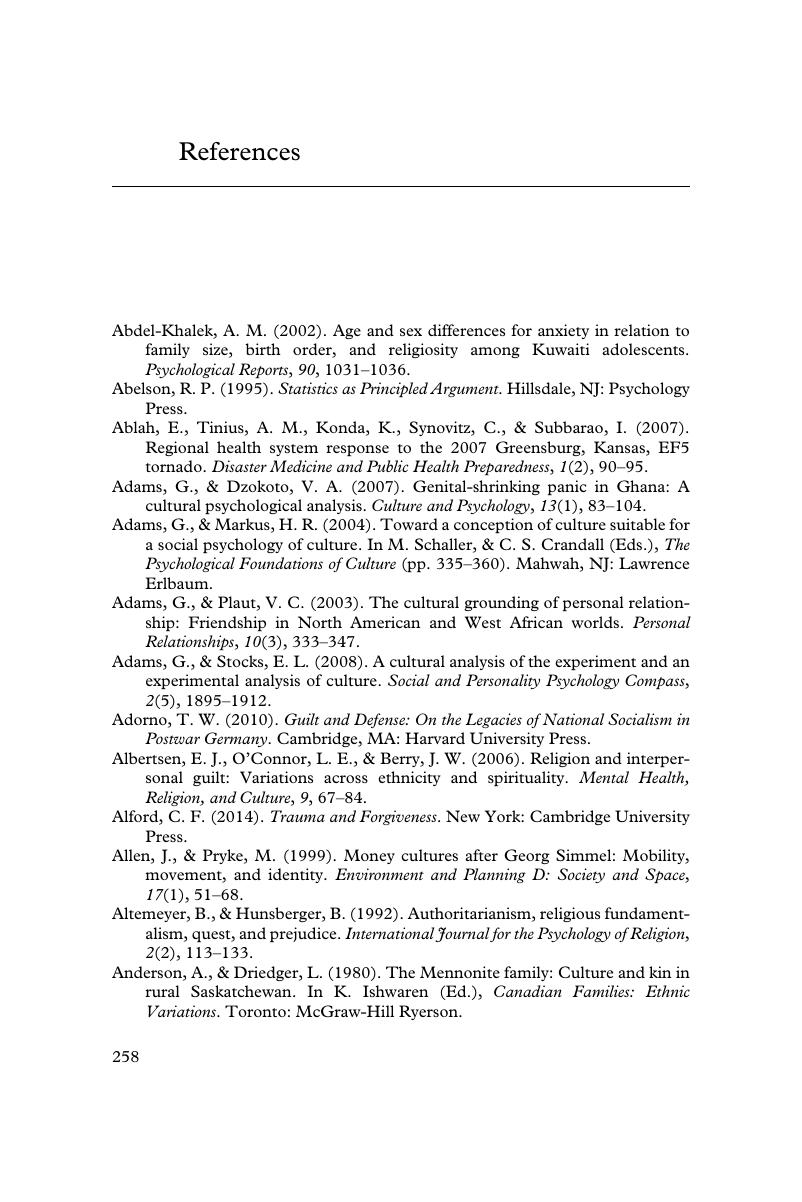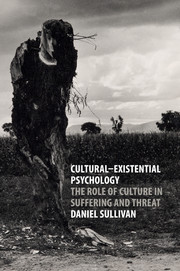References
Published online by Cambridge University Press: 05 April 2016
Summary

- Type
- Chapter
- Information
- Cultural-Existential PsychologyThe Role of Culture in Suffering and Threat, pp. 258 - 292Publisher: Cambridge University PressPrint publication year: 2016



